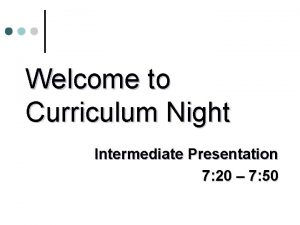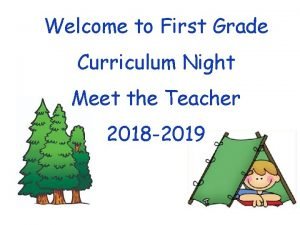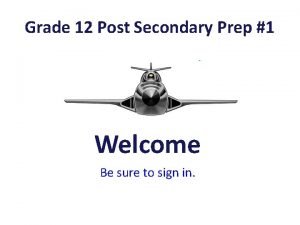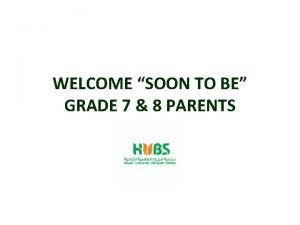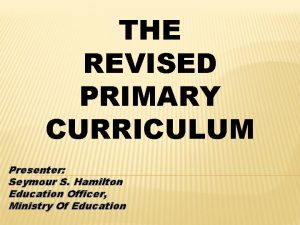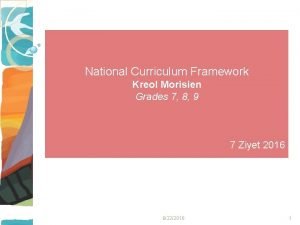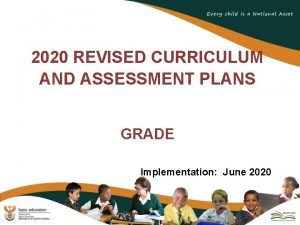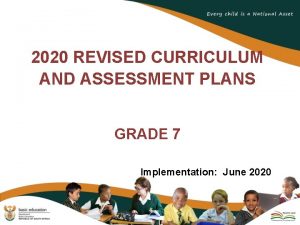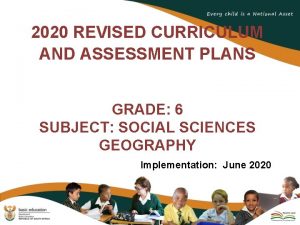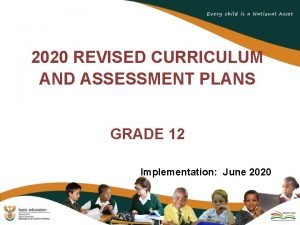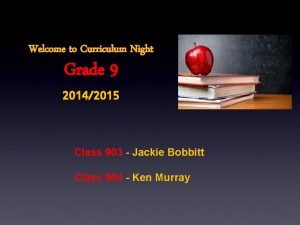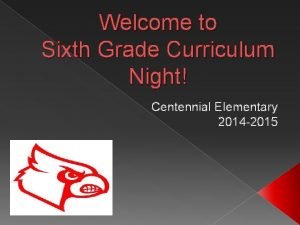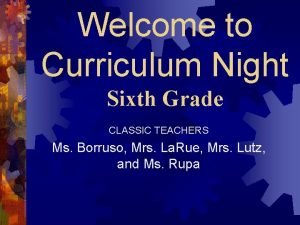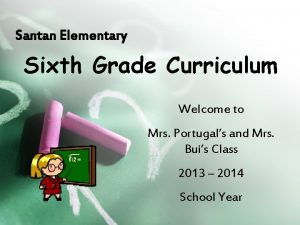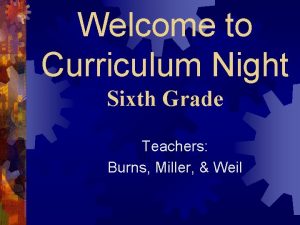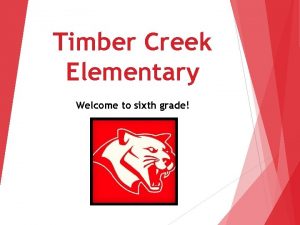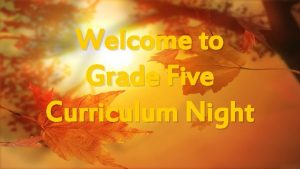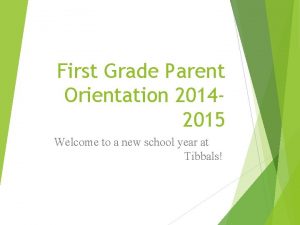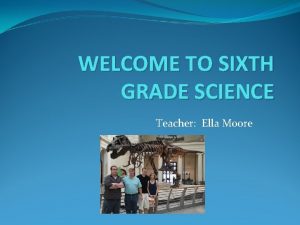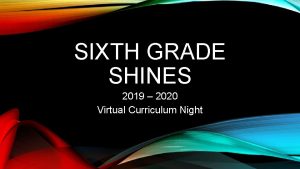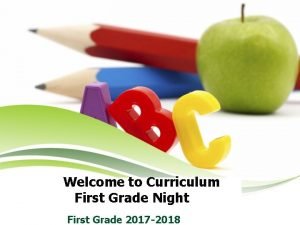WELCOME Sixth Grade Science 20142015 Science Curriculum Go






















- Slides: 22

WELCOME Sixth Grade Science 2014/2015 Science Curriculum Go 6 B! It’s going to be a banner year!

Get to Know Me MY EXPERIENCE � I’ve been teaching for 16 years. � I taught 6 th grade science, 6 th grade social studies, 7 th grade math and multimedia. MY BACKGROUND � I grew up in Denver, Colorado. � I attended Lakenheath Elementary School in England, Northglenn High School in Colorado, University of Northern Colorado Greeley and University of Phoenix.

My Family �My Husband’s name is Joe. We have been married for 36 years. �I have two daughters. Tori is a hair stylist at KBella and my oldest daughter is a 1 st grade teacher. �I will soon be a grandmother in November �I have two pets: Harley and Bane who are adorable mutts.

Hobbies/Interests �I love to read. �I love to cook. �I love movies. �I love teaching science.

Communication �My email: slilly@kyrene. org �My phone: 480 -541 -6107 �Class web site: http: //goo. gl/Oj. Ue. RW

1 st Quarter • Scientific Inquiry • Lab Safety • Measurement • Cells • Microlife

Students use scientific processes to: v Question v Plan and conduct investigations v Use appropriate tools and techniques to gather data v Think critically and logically about relationships between evidence and explanations v Communicate results

Structure and Function in Living Systems v Explain the importance of water to organisms v Describe the basic structure of a cell v Describe the function of cell parts v Differentiate between plant and animal cells

Micro. Life �Explain how the human body contracts and fights illnesses and diseases.

2 nd Quarter • Body Systems • Plants

Animals: Relate and describe the following structures of living organisms to their functions: Animals v. Respiration – gills, lungs v. Digestion – stomach, intestines v. Circulation – heart, veins, arteries, capillaries v. Locomotion – muscles, skeleton

Animals Cont. v. Describe how the nervous system interacts with these systems: v. Respiration v. Digestion v. Circulation v. Locomotion

Plants: Relate and describe the following structures of living organisms to their functions v. Transpiration – stomata, roots, xylem, phloem v. Absorption – roots, xylem, phloem v. Response to stimulus (phototropism, hydrotropism, geotropism) – roots, xylem, phloem

Energy & Science and It’s 3 rd Quarter Impact on Society Renewable Nonrenewable Transfer of energy

Physical Science Energy v Renewable and nonrenewable resources v Ways energy can be stored and transformed v How thermal energy can be transferred

Energy Continued v. Compare the pros and cons of alternate energy sources and the technology behind them. v. Explain why all energy sources should be conserved.

4 th Quarter v. Describe layers of the atmosphere v. Structures of lakes, rivers, oceans v. Water cycle v. Weather Earth’s Processes and Systems

Science in Personal and Social Perspectives v. Describe the interactions between human populations, natural hazards, and the environment. v. Understand the impact of technology.

Grades � 80% Assessment Tests & Quizzes Projects Lab Reports � 20% Class Work and Homework

Our partnership this year means:

I will do my part when your child is here by: � Providing structure and procedures so that he or she is confident and comfortable with daily happenings � Maintain high but reasonable expectations � Communicate with you whenever necessary or upon request from you � Provide valuable practice through homework � Strongly protect your child’s right to a challenging learning environment free from distractions and misbehavior

I will need your help when your child is home by: � Supporting the classroom procedures and providing structure at home. � Letting me know if my expectations are too high, or not high enough. � Monitoring the neatness, accuracy and level of difficulty of their homework. � Communicating ANYTHING about your child that might interfere with their learning.
 Peter piper picked
Peter piper picked Rubber baby buggy bumpers tongue twister lyrics
Rubber baby buggy bumpers tongue twister lyrics Compare contrast transition words
Compare contrast transition words Wise men three clever are we
Wise men three clever are we Welcome to curriculum night
Welcome to curriculum night Welcome to curriculum night
Welcome to curriculum night Welcome to grade 12
Welcome to grade 12 Managebac disv
Managebac disv Welcome to grade 7
Welcome to grade 7 Welcome to grade 10
Welcome to grade 10 Hope you had a great summer break
Hope you had a great summer break Welcome to fourth grade
Welcome to fourth grade What is your favourite subject?
What is your favourite subject? Revised primary curriculum grade 1-3
Revised primary curriculum grade 1-3 National curriculum framework grade 7-9
National curriculum framework grade 7-9 2021 revised curriculum and assessment plans
2021 revised curriculum and assessment plans 2020 revised curriculum and assessment plans grade 6
2020 revised curriculum and assessment plans grade 6 2020 revised curriculum and assessment plans grade 7
2020 revised curriculum and assessment plans grade 7 2020 revised curriculum and assessment plans
2020 revised curriculum and assessment plans 2020 revised curriculum and assessment plans grade 7
2020 revised curriculum and assessment plans grade 7 2020 revised curriculum and assessment plans
2020 revised curriculum and assessment plans 2020 revised curriculum and assessment plans grade 6
2020 revised curriculum and assessment plans grade 6 2020 revised curriculum and assessment plans grade 11
2020 revised curriculum and assessment plans grade 11




